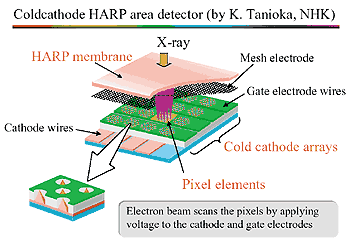High throughput protein crystallography project
A key factor for high performance X-ray protein crystallography beam line is the overall duty cycle of the beam line including efficient optics alignment, automation of sample handling, crystal visualization and alignment, data collection and data analysis. Many synchrotron radiation facilities are now concentrating on these high-throughput projects, which will have an enormous influence on the overall throughput of the field. At the PF, we are pursuing various R&D projects in order to provide the best possible data collection facilities at the PF. We consider sources, optics, end station instrumentation including the choice of a detector, sample environment, data acquisition and data analysis, and a new beam time scheduling scheme for flexible and rapid access as integral parts of the beam line and try to unify them among the protein crystallography beam lines at our institute.

In August 2001, a competitive research grant was awarded from the Japanese government to the group for a project to increase the efficiency of protein structure determination using the synchrotron facilities. The proposal includes 4 main R&D projects: (1) a large scale protein expression and purification system (2) a visualization system for micro crystals and a crystal freezing robot, (3) a high brilliance micro-focus MAD beam line, and (4) a software package for automated structure determination.
The first project is in collaboration with Profs. M. Tanokura and K. Saigo of the University of Tokyo, while the PF staff will use the outcome for producing proteins for structure determination. Prof. K. Miki of Kyoto University will join the effort to evaluate the crystal visualization system and the freezing robot. The PF staff will design and construct a MAD beam line for high throughput structure determination as part of the third project. Here we aim to develop an extremely precise sample rotation and automated sample alignment using a CCD microscope, an UV/visible illumination aided by an on-chip pattern recognition program. One of the most challenging projects of our proposal is the development of a HARP based X-ray area detector, which will be pursued by NHK Engineering Services, a subsidiary of the national broadcasting corporation. Assoc. Prof. S. Kishimoto of the PF and our group will evaluate the new detector and implement it into the experimental environment. The groups of Prof. I. Tanaka of Hokkaido University and Assoc. Prof. A. Nakagawa of Osaka University will play key roles in the fourth project joined by the PF staff on the development of a software package for automated structure determination. These technological developments will be coordinated with other synchrotron facilities of the world so as to provide the best experimental environment to users.
